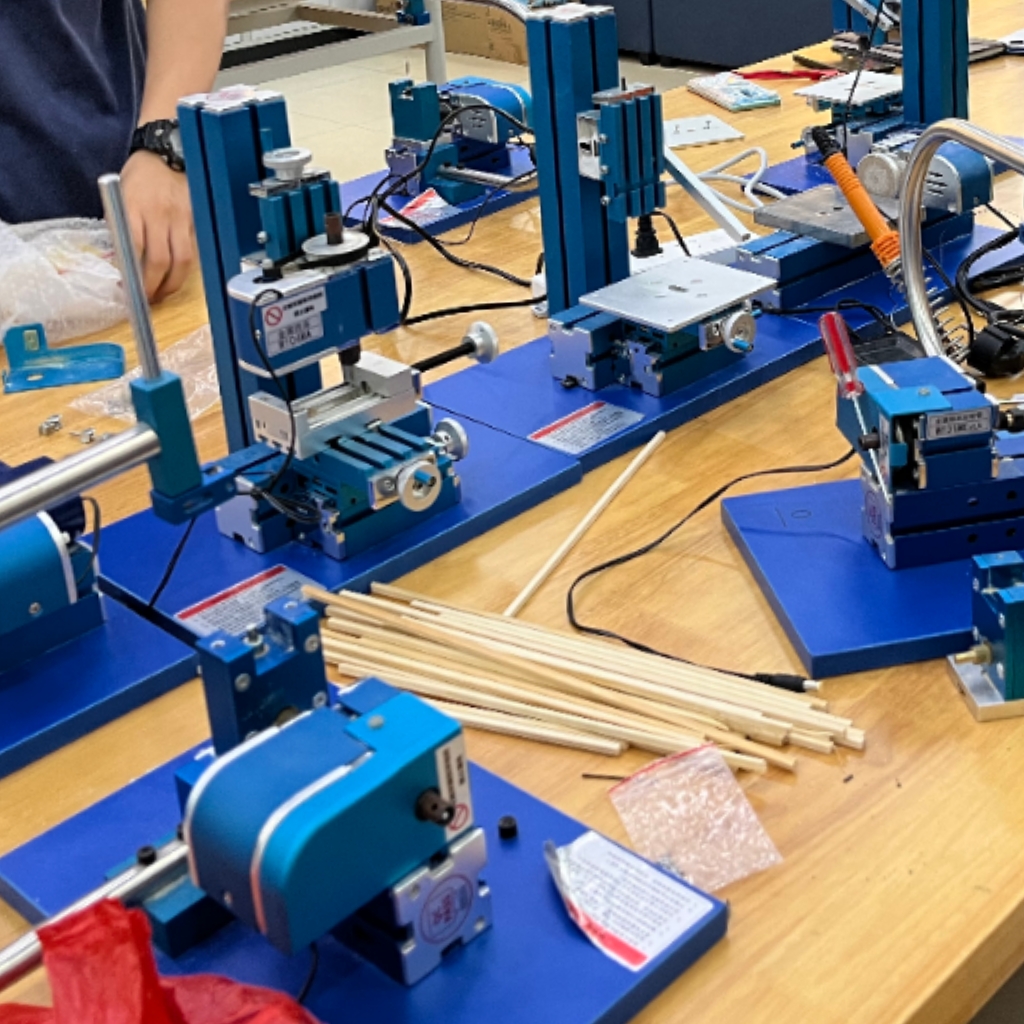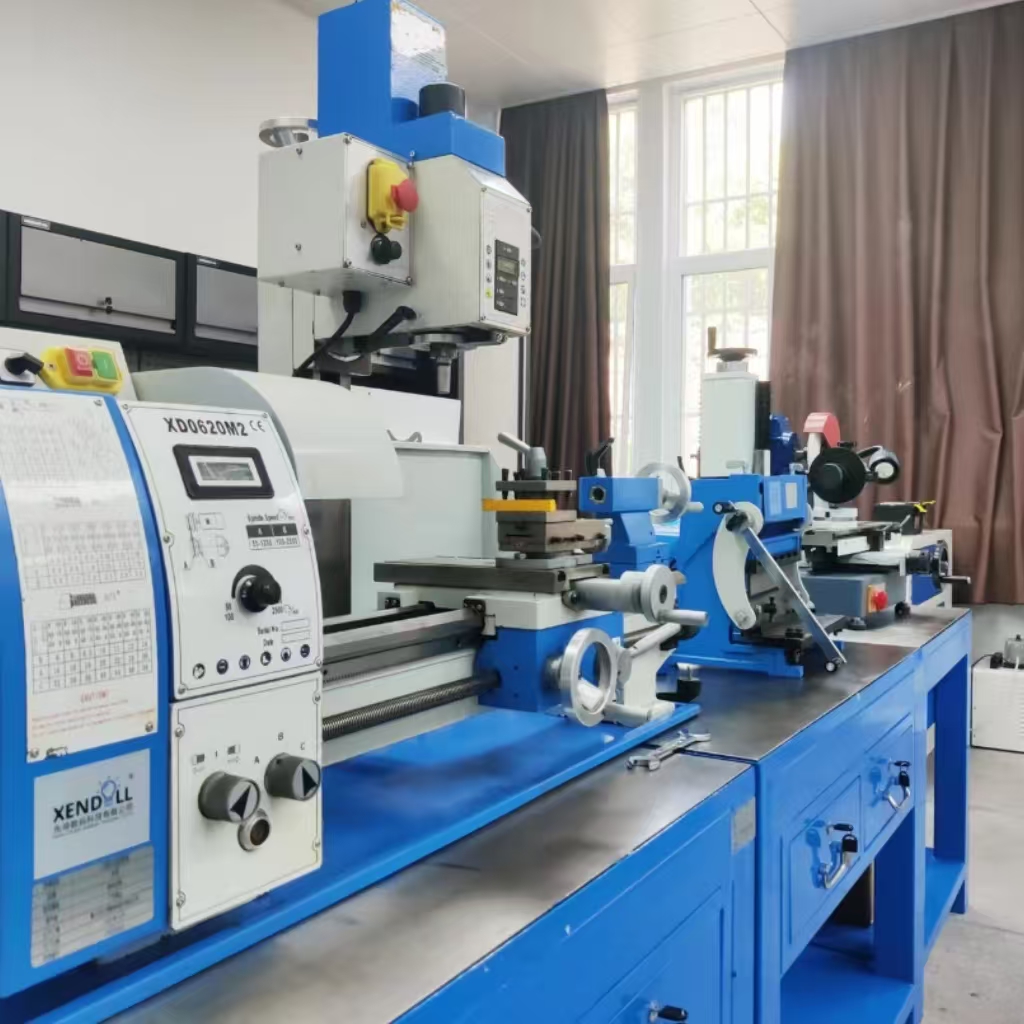Blog
Xendoll has 22 years of experience in the production of small machine tools. We will help you choose the suitable machine and share our experience in CNC machining with you.
 Jun 10, 2025
Jun 10, 2025

 742
742
Backlash – that frustrating, often imperceptible amount of "slop" or free movement in your lathe's feed mechanisms – is the nemesis of precision machining. Whether you're a seasoned professional supplying parts, an educator ensuring student projects meet specs, or a dedicated hobbyist crafting intricate components, excessive backlash wreaks havoc. It causes uneven cuts, dimensional inaccuracies, poor surface finishes, chatter, and even safety hazards as tools can unexpectedly grab. For users of high-quality mini lathes like those from Xendoll Tools, designed for accuracy and reliability, eliminating backlash is paramount to unlocking their full potential. This guide delves into the causes and provides practical, actionable solutions to diagnose and remove backlash, restoring your lathe to peak performance.

Understanding the Culprits: Where Backlash Lurks
Backlash isn't a single problem; it's a symptom of clearance within the mechanical systems that transmit motion from the handwheel or motor to the cutting tool. Key areas to investigate include:
Leadscrew and Nut Assembly: This is the most common source, especially on the longitudinal (Z-axis) feed. Wear over time, inadequate lubrication, or poor initial fit creates gaps between the screw threads and the nut threads.
Gears (Headstock, Gearbox, Apron): Worn teeth, improper meshing, or excessive clearance in gear shafts/bearings allow movement before engagement. This affects threading, power feeds, and sometimes carriage movement.
Apron Mechanisms: Components like the clutch system, feed engagement levers, and the cross-slide screw/nut assembly can develop play. The cross-slide (X-axis) is particularly susceptible due to frequent use and directional changes.
Bearings and Bushings: Worn spindle bearings, carriage way bearings, or bushings supporting shafts and screws introduce unwanted movement.
Gibs and Slides: While primarily affecting rigidity and smoothness, excessively loose gibs on the carriage or cross-slide can contribute indirectly to perceived slop during direction changes.
The Battle Plan: Strategies to Remove Backlash
Combatting backlash involves a combination of inspection, adjustment, maintenance, and sometimes component replacement or upgrade:
1. Diagnosis: Finding the Source
* The Rock Test: Engage the feed (handwheel or power). Try to gently rock the carriage or cross-slide handle back and forth in the direction opposite the feed force. Visible or felt movement indicates backlash.
* Dial Indicator Precision: Mount a dial indicator on the bed, referencing a solid point on the carriage. Move the carriage slowly via the handwheel in one direction until it starts moving. Zero the indicator. Now, reverse the handwheel direction. The amount the indicator moves before the carriage starts moving in reverse is your backlash measurement. Repeat for the cross-slide. This quantifies the problem and helps pinpoint the primary location (screw/nut vs. gear play higher up the chain).
* Systematic Isolation: Listen and feel for clunks or play while operating different controls. Disengage gears or feeds to isolate subsystems.
2. Mechanical Adjustments: Tightening the System
* Adjustable Split Nuts: Many lathes, especially higher-end models, feature split leadscrew nuts. Look for an adjustment screw on the nut housing. Carefully tightening this screw closes the gap between the nut halves, taking up play against the screw. Crucial: Adjust incrementally! Overtightening causes binding, rapid wear, overheating, and potential damage. Aim for smooth operation with minimal perceptible play – a few thousandths of an inch is often acceptable for general work.
* Cross-Slide Nut Adjustment: Similar principles apply. Some nuts have a setscrew pushing a tapered plug against the nut halves. Loosen the locknut, tighten the setscrew slightly, test for play and binding, then relock.
* Gear Mesh Adjustment: Consult your lathe manual. Gears often have eccentric bushings or adjustable mounting points. Correct mesh should have a slight "tick-tick" feel when rocked by hand, not tight nor excessively loose. Ensure shafts aren't bent and keyways aren't worn.
* Gib Adjustment: While not directly removing screw backlash, properly adjusted gibs eliminate slop in the slide movement itself, ensuring force is transmitted directly to the screw/nut without lost motion in the slide. Adjust for smooth sliding with no perceptible rock.
3. Component Replacement and Upgrades: When Adjustment Isn't Enough
* New Leadscrew Nuts: Worn nuts are a consumable item. Replacing a brass or bronze nut is a common repair. Ensure compatibility with your screw.
* Anti-Backlash Nuts: These are engineered solutions featuring spring-loaded elements that constantly push against the screw threads, eliminating play. They are highly effective upgrades for both longitudinal and cross-feed screws, often available for popular mini-lathe models. (Brands like Xendoll Tools often offer compatible precision components).
* Precision Ball Screws: While a significant investment and modification, ball screws offer near-zero backlash, high efficiency, and smooth motion. More common on CNC lathes but possible upgrades for high-precision manual work. Requires substantial mechanical adaptation.
* Bearing/Bushing Replacement: Worn support bearings for leadscrews, gear shafts, or even the spindle contribute to system play. Replacing these requires disassembly but restores fundamental rigidity.
4. Electronic Compensation (Primarily CNC): Modern CNC lathes often use software backlash compensation. The control system measures the backlash amount and automatically adds extra movement during direction reversals to compensate. This is effective but doesn't fix the underlying mechanical wear – it just masks it. Regular mechanical maintenance is still essential.
5. Operational Workarounds (Mitigation, Not Elimination):
* Always Approach from One Direction: For critical dimensions, make your final cut by moving the tool into the work in the same direction you took up the backlash. Never reverse direction during the final pass.
* Lock Slides: When not actively feeding (e.g., during facing cuts or when using the compound), lock the carriage or cross-slide to prevent creep.
* Consistent Handwheel Pressure: Develop a feel for applying slight, consistent pressure to take up the slack before engaging the cut.

Conclusion: Precision Regained – A Commitment to Maintenance
Removing backlash isn't a one-time fix; it's an ongoing aspect of lathe ownership and maintenance. By understanding the sources, methodically diagnosing the issue using simple tools like a dial indicator, and applying the appropriate adjustments or upgrades, you can dramatically reduce or eliminate this precision killer. Regular lubrication, avoiding crashes, and periodic checks are vital for longevity.
For distributors and educators supplying equipment like Xendoll Tools mini lathes, emphasizing the availability of adjustment procedures, replacement parts (like high-quality nuts), and potential upgrades (anti-backlash nuts) is key. Hobbyists benefit immensely from understanding these maintenance tasks to keep their workshops running accurately and safely.
Ultimately, conquering backlash transforms your lathe from a source of frustration back into a reliable instrument of precision. Whether you're machining complex parts for industry, teaching the next generation of machinists, or crafting a personal masterpiece in your home workshop, minimizing backlash ensures your results consistently meet the highest standards. Visit xendolltools.com to explore precision components, maintenance resources, and our range of reliable mini lathes designed for users who demand accuracy.



 Show all our samples
Show all our samples
 Provide you with a free quote
Provide you with a free quote
 Answer all the questions you may have
Answer all the questions you may have
 Guided installation and other options
Guided installation and other options